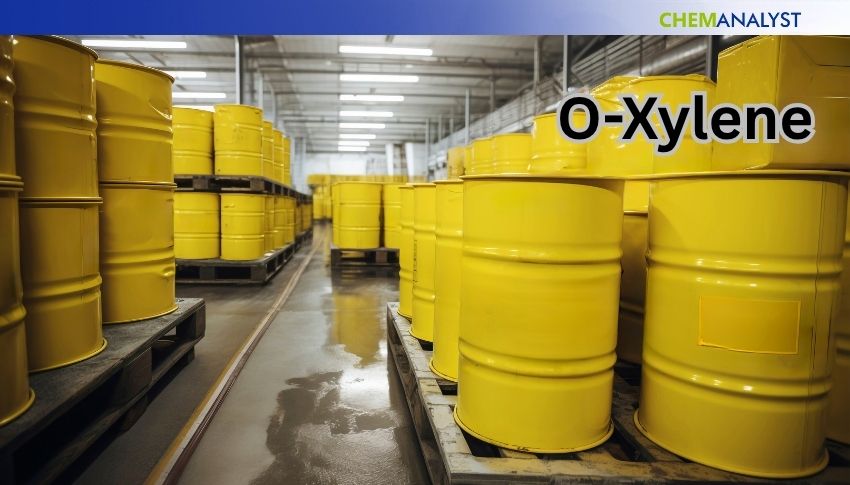Welcome To ChemAnalyst

In the USA and Germany, o-Xylene prices remained flat through the first three weeks of June, with balanced supply-demand fundamentals, stable refinery run rates, and minimal volatility in feedstock prices. In the USA, demand from the export market continued to be strong with little fluctuation through domestic uses. In Germany, the sustainability of imports from South Korea was offset by low production rates from domestic sources and opposing trends in downstream demand resulted impact negligible to price overall. In examining the markets going forward in the summer months, prices are expected to rebound slightly due to increasing naphtha and crude pricing, as well as ongoing seasonal stocking activity in many plasticizer and resin consumer applications.
Ortho Xylene (o-Xylene) prices in the USA and Germany were stable during the first three weeks of June due to balanced supply-demand fundamentals, stable output, and low feedstock volatility.
In the USA, o-Xylene prices did not budge in the first, second, and third week in June. A slight increase of 0.8% in the upstream naphtha numbers had an insignificant impact on o-Xylene numbers as both domestic and export consumption were stable. The downstream market of o-Xylene remained firm with healthy inventory levels. The high export demand was shown with constant inquiries from key Latin American and European markets in sectors such as packaging and plasticizers.
Despite geopolitical uncertainties and feedstock cost pressures, there were no significant logistical and supply-side challenges. Domestic consumption of o-Xylene remained stable as a result of consistent downstream demand from resin bottle, phthalic anhydride, and PVC applications. The balance in operating environment, coupled with predictable buying patterns, played a significant role in strong price motivation throughout the month while export-driven flows from Texas ports continued operating without any hindrance.
At the same time in Germany, o-Xylene prices showed stability during all three weeks of June. During the first week, upstream naphtha prices fell 0.4%, but this did not affect o-Xylene prices due to balancing downstream trends. While downstream demand from resin segment saw a seasonal increase, largely because of summer beverage packaging and lower demand from the phthalic anhydride sector, tied to the coatings and constructions markets, pushed pricing down a little. The forces balanced each other out.
Domestic o-Xylene production in Germany during all three weeks of June, was relatively low as local facilities operated at restrained capacities, prioritizing other petrochemical outputs amid narrow margins and subdued regional demand growth. As a result, Germany relied upon imported volumes for their downstream needs to a significant degree. Most of these o-Xylene imports were coming from South Korea. South Korean suppliers had been able to maintain levels of output and readiness to export, which supplemented domestic production that was insufficient for final market needs but also created a stable external supplier flow for the German market supporting price stability.
Across both regions, o-Xylene prices reflected a broader trend of consolidation rather than volatility as there were no supply disruptions, consistent buying patterns, and stable operating conditions.
Looking Ahead, prices of o-Xylene are anticipated to see a minor increase in the next few weeks in both the USA and Germany, driven by an expected uptick in the price of upstream naphtha and crude oil prices. Any tightening of supply or an increase in feedstock prices will exert upward o-Xylene price pressure in the market.
We use cookies to deliver the best possible experience on our website. To learn more, visit our Privacy Policy. By continuing to use this site or by closing this box, you consent to our use of cookies. More info.
